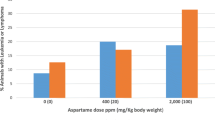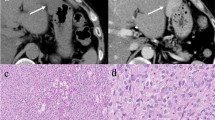Abstract
IN an attempt to elucidate the mode of action of urethane (ethyl carbamate) as a carcinogen for mice, its dithio analogue (NH2CSSC2H5) was prepared1,2 and a study was made of its lethal dose and general toxic effects before testing it for carcinogenicity. A report of the latter is in preparation. The short-term tests revealed an action of this compound whose significance is, at the moment, rather obscure.
Similar content being viewed by others
References
Campbell, N., and McKail, J. E., J. Chem. Soc., Part II, 1251 (1948).
Delépine, M., Bull. Soc. chim. Paris, 29, 48 (1903).
Author information
Authors and Affiliations
Rights and permissions
About this article
Cite this article
COWEN, P. Splenic Siderosis in Mice Treated with Dithiourethane. Nature 184, 366–367 (1959). https://doi.org/10.1038/184366b0
Issue Date:
DOI: https://doi.org/10.1038/184366b0
- Springer Nature Limited





